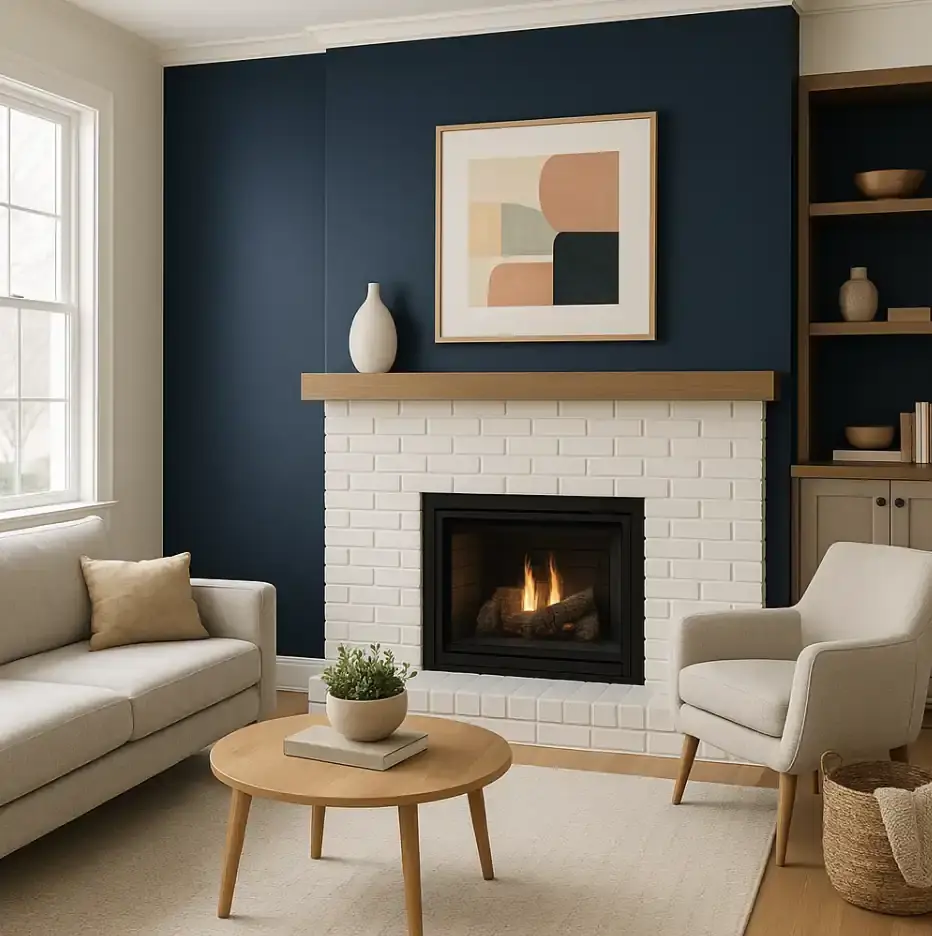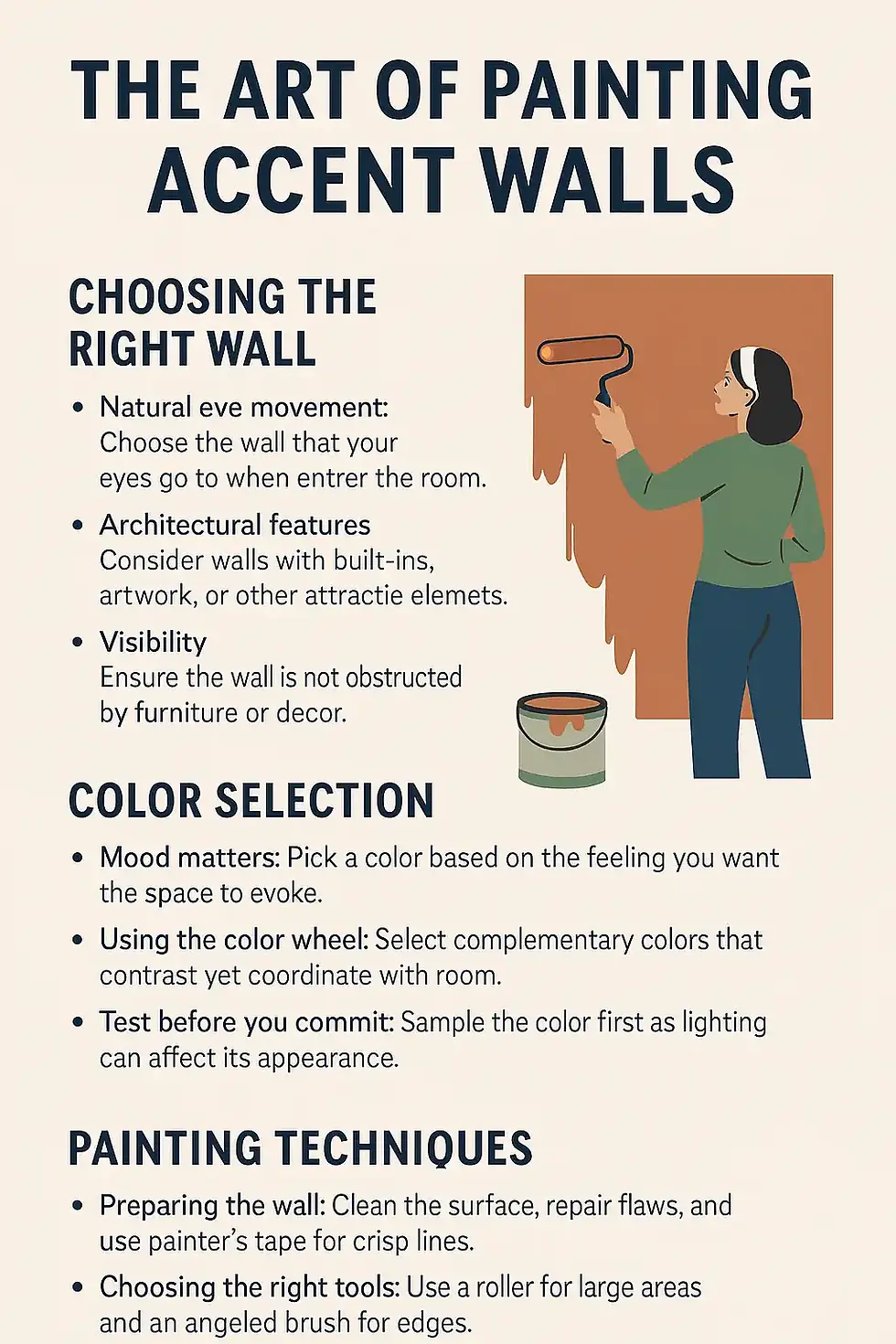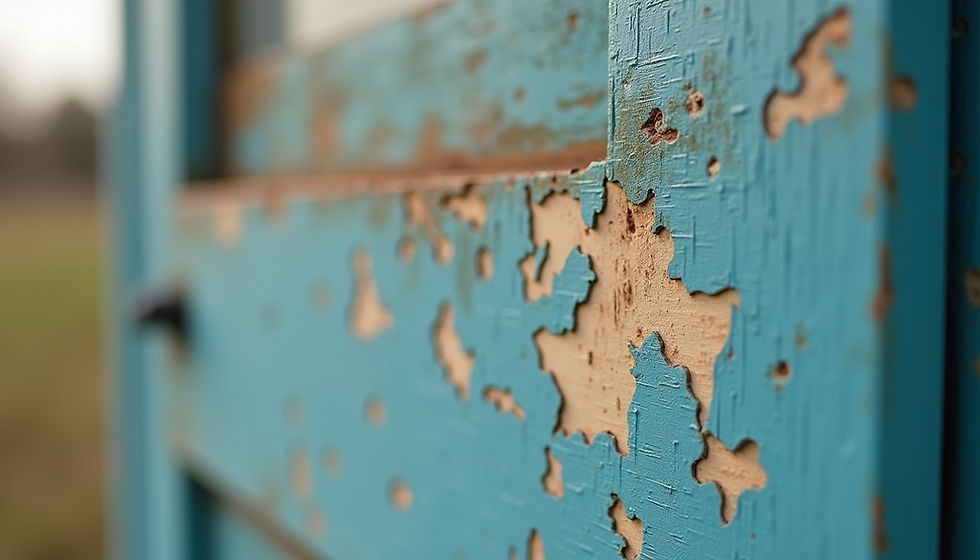Creating Accent Walls with Interior Paint: Techniques and Best Practices
- Angel Sosa
- Jul 20
- 5 min read
Accent walls can dramatically enhance the ambiance of any room, bringing depth, dimension, and a touch of personal style. The choice of a single wall to serve as a focal point can turn your home into a sanctuary that reflects your unique tastes. This blog post explores the artistry and techniques of creating accent walls, highlighting optimal wall choices, vibrant color selections, and effective painting methods.
Understanding Accent Walls
To effectively create an accent wall, it's vital to understand what it is. An accent wall is a single wall inside a room that's painted a different color or pattern than the other walls. This feature draws attention to the wall and adds interest to the overall aesthetics of the space.
Accent walls work beautifully in various settings such as living rooms, bedrooms, dining areas, and hallways. For instance, in a cozy living room, a bold navy blue accent wall behind the sofa could serve as a stunning backdrop for art or family photos without overwhelming the entire room.
Choosing the Right Wall
Identifying Your Focal Point
Choosing the right wall for your accent can make all the difference. Here’s how to pick the perfect one:
Natural Eye Movement:
Check where your eyes naturally go when entering the room. For example, if a wall features a fireplace or large window, it likely draws the most attention and is an ideal candidate for an accent wall.
Architectural Elements:
If the wall has unique features like built-in shelves or artwork, it can enhance the overall effect of the accent wall. For instance, a wall with a large mirror or an interesting texture showcases the color beautifully.
Visibility:
Ensure the wall is unobstructed by furniture or other decor items so that it remains the focal point of the room. An empty section in a hallway, for instance, is perfect for a standout color or pattern.

Color Selection for Your Accent Wall
Picking Standout Colors
Once the wall is selected, it's time to choose a color that pops while working well with the rest of the room. Here are tips for picking the right shade:
Mood Matters:
Colors set different moods in a room. For instance, if you aim for tranquility in a bedroom, calming soft greens or light blues can help. In contrast, a lively orange or yellow can invigorate a dining area.
Using the Color Wheel:
Understanding complementary colors can assist in selecting shades that stand out yet harmonize with others in the room. For example, pairing burgundy with soft beige creates a warm and inviting atmosphere.
Test Before You Commit:
Get sample paint pots and test colors on a small section of the wall. Factors like lighting can significantly change how colors appear. Imagine a bold red looking too intense in daylight but stunning in the warm glow of evening light.
Trends in Accent Wall Colors
In recent years, trends have shown a preference for rich jewel tones like emerald or deep teal, often used to create a sense of luxury. Meanwhile, muted pastels serve well in modern minimalist decor. For instance, a gentle dusty rose can bring softness to a stark white living room, balancing the overall look.
Techniques for Painting Accent Walls
Preparing the Wall
Proper preparation is key to getting a professional finish. Here’s a concise checklist:
Wall Cleaning:
Start by wiping down the wall with a damp cloth to remove dust and dirt that can interfere with paint adhesion.
Fixing Imperfections:
Any holes or cracks should be filled with a patching compound, then sanded smoothly. This step is crucial, as a rough wall can ruin an otherwise perfect paint job.
Tape Off Areas:
Use painter's tape to define edges along adjacent walls, ceilings, and trim. Clean lines make a significant distinction between DIY and professional outcomes.
Choosing the Right Tools
Using quality painting tools can enhance your results:
Proper Brushes and Rollers:
Use rollers for large flat areas and brushes for edges and corners. A 3-inch angled brush is excellent for cutting in at the top and bottom edges.
Paint Trays:
A paint tray makes applying even coats easier and helps manage the amount of paint on your roller, reducing drips.
Protective Cloths:
Lay down drop cloths to safeguard your floors and furniture from paint splatter.

Painting Techniques
Here are effective techniques for applying paint:
Use a Primer:
Applying primer is particularly important when transitioning from a light to a dark color. A good primer ensures even coverage and long-lasting results.
Multiple Coats:
Depending on the type of paint, two or three coats may be necessary for full saturation. It’s best to let each coat dry completely before applying the next.
Textural Effects:
Consider creative techniques like sponging or stenciling to add depth. For example, a sponged effect in two different shades can create a stylish appearance suitable for modern decor.
Finishing Touches
Choosing the Right Finish
The finish of your paint can drastically change the look of your accent wall. Here’s a breakdown of commonly used finishes:
Matte Finish:
This absorbs light, ideal for hiding imperfections in low-traffic areas. It works nicely in a bedroom or study.
Eggshell Finish:
This offers a slight sheen while remaining easy to clean, suitable for living spaces.
Satin or Semi-Gloss:
These finishes reflect more light and are durable, perfect for high-traffic areas like hallways or children’s rooms.
Additional Accents
After the paint dries, consider incorporating decorative touches:
Artwork:
Select pieces that resonate with you personally, whether they are family photos or contemporary prints, to add character to your accent wall.
Shelves for Decor:
Adding floating shelves enables you to display decor, plants, or books. This not only enhances the wall but also adds functional storage.
Lighting:
Wall sconces or accent lighting can highlight your wall beautifully, making it a central feature, especially in the evenings.
Maintaining Your Accent Wall
To maintain the beauty of your accent wall, develop a regular cleaning routine. Simple dusting or wiping with a damp cloth will prevent grime from dulling its brilliance.
For touch-ups, a little paint on a fine brush can address minor scratches or marks. This prevents the need for a full repaint and keeps your wall looking fresh.
Final Thoughts
Creating an accent wall in your home can be an exciting project that showcases your individuality. By wisely choosing the wall, carefully selecting colors, and employing effective painting techniques, you can achieve a stunning look that feels just like home.
Accent walls are powerful tools in interior design, breaking monotony and sparking interest. Whether you opt for a bold color or a soft shade, take joy in the creative process and enjoy transforming your space into something special.
With the right planning and execution, your accent wall will undoubtedly become a showstopper within your home. So gather your supplies and let your creativity shine!





Comments